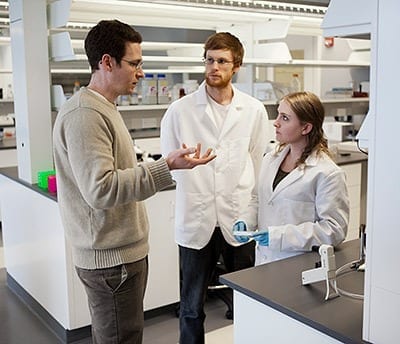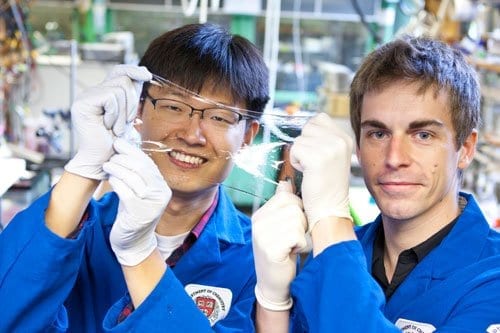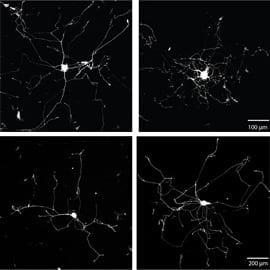
“This method makes antibiotics more potent, so hopefully it would reduce the mutant selection window,” Bryndilsen said.
As public health officials sound the alarm about the global spread of drug-resistant bacteria, researchers are working to develop more effective antibiotics to counter this dangerous trend. Now, results from a team including a Princeton University scientist offer a possible solution that uses the bacteria’s own byproducts to destroy them.
In a recent paper in the journal Nature Biotechnology, first author Mark Brynildsen, a Princeton assistant professor of chemical and biological engineering, reported that scientists can force bacteria to increase their production of a class of molecules called reactive oxygen species, which can either kill the bacteria outright or make them far more vulnerable to antibiotics. Bacteria normally produce reactive oxygen species during growth. Small amounts don’t hurt them because of certain protective enzymes within the bacteria, but too much of the substances can lead to “oxidative stress.” The researchers decided this weakness could be exploited.
“The question was, could we leverage this natural byproduct of growth?” Brynildsen said.
Scientists don’t fully understand the mechanism by which bacteria produce reactive oxygen species. Yet, Brynildsen and fellow members of the research team led by Professor James Collins at Boston University understood enough about the production in general to construct a number of feasible computer models. Essentially, the team analyzed reactive-oxygen production from thousands of mathematical models and looked for trends. That analysis revealed that certain enzymes allowed bacteria to reduce the levels of reactive oxygen species they created.
“This was what we were looking for, enzymes that when removed increased reactive-oxygen production independent of the uncertainty in the modeling,” Brynildsen explained.
The team analyzed a relatively benign strain of the E. coli bacteria, a common microbe whose variations can cause serious illness in humans. Using their computer model, the team predicted which bacterial genes are likely involved in regulating reactive oxygen species production. They then tested their predictions by deleting those genes in bacteria and confirming that the bacteria experienced increased production of reactive oxygen and an increased sensitivity to oxidants. The researchers then treated these bacteria with antibiotics and found that the organisms were in fact more vulnerable.
In some tests, the researchers added carboxin, a chemical compound often used as a fungicide, which mimicked the effects of altering one of the genes. They confirmed that the chemical amplified the killing effect of a common antibiotic, ampicillin. Brynildsen said that the research confirmed that although carboxin itself may not be suitable as a drug, chemicals with similar effects could be used in conjunction with antibiotics to increase the effectiveness of drug treatments against E. coli infections. Brynildsen and fellow researchers at Princeton plan to pursue similar research with other bacteria.
One of the possible benefits of increasing reactive-oxygen species concentrations is to allow current antibiotics to become more effective at lower dosages. In battling disease resistance, scientists try to deliver antibiotics in sufficient concentrations to kill bacteria without harming the patient. Problems arise when the maximum dose of an antibiotic that is safe for a person is too low to kill all the bacteria, allowing resistant organisms to survive. Epidemiologists call this gap the “mutant selection window.”
“This method makes antibiotics more potent, so hopefully it would reduce the mutant selection window,” Bryndilsen said.
The Latest Bing News on:
Antibiotic resistance
- Can CRISPR-Cas gene editing tech fight antimicrobial resistance?on April 28, 2024 at 5:48 am
CRISPR-Cas, the Nobel Prize-winning gene-editing technology, has the potential to target resistance genes and make bacteria sensitive to first-line antibiotics again, according to a study.
- No Antibiotics Needed – Revolutionary Chronic Wound Treatment Could Help Millionson April 28, 2024 at 1:29 am
An international team of scientists has developed a new treatment for chronic wounds that uses ionized gas to activate a wound dressing, without the need for antibiotics. The treatment involves the pl ...
- A vaccine to combat antibiotic resistanceon April 27, 2024 at 2:00 pm
A team of researchers at Michigan State University have outlined an approach to combating a prevalent public health issue: the development of treatment-res | Technology ...
- Cats And Dogs Can Spread Antibiotic Resistant Superbugs To Ownerson April 27, 2024 at 10:55 am
Transfer of bacteria between sick pets and their humans may be contributing to antibiotic resistance, according to new research.
- Breakthrough Vaccine Shows High Protection Against Drug-Resistant Superbug in Miceon April 26, 2024 at 4:03 pm
Scientists have developed a vaccine against a notorious drug-resistant superbug, targeting molecules on its surface that are also found on other bacteria and fungi. Although only tested in mice, the ...
- Experts develop way to harness CRISPR technology to deal with antimicrobial resistanceon April 26, 2024 at 3:10 pm
Antimicrobial resistance (AMR) is continuing to increase globally, with rates of AMR in most pathogens increasing and threatening a future in which every day medical procedures may no longer be ...
- Common antibiotic Neosporin may shield against viral respiratory infectionson April 26, 2024 at 9:00 am
A study conducted first in mice and then in human volunteers suggests that a common antibiotic, neomycin, which is the main active ingredient in Neosporin, may help protect against viral respiratory ...
- What to Know About Pivya, the New Antibiotic Treatment for UTIson April 26, 2024 at 4:06 am
The Food and Drug Administration recently approved Pivya (pivmecillinam) to treat uncomplicated UTIs in female adults. Clinical trials show that Pivya is effective and side effects are limited.
- A Vaccine to Fight Antibiotic Resistanceon April 25, 2024 at 2:25 pm
MSU, Harvard Medical School team up to expand vaccine science’s role in the fight against MRSA and other infections ...
- Climate change fuels the rise of global antimicrobial resistanceon April 25, 2024 at 10:34 am
Climate change exacerbates antimicrobial resistance by altering environments where microbes thrive, leading to increased disease spread.
The Latest Google Headlines on:
Antibiotic resistance
[google_news title=”” keyword=”antibiotic resistance” num_posts=”10″ blurb_length=”0″ show_thumb=”left”] [/vc_column_text]The Latest Bing News on:
Mutant selection window
- From Playroom To Payday: The Surprising Value of 20 Vintage Children's Toyson April 18, 2024 at 5:00 pm
Hot Wheels manufacturer Mattel first designed this model with surfboards sticking out the back window. Unfortunately ... screams and the Young T-Rex with Deadly Slashing Jaw. Teenage Mutant Ninja ...
- Microsoft and Google aren’t happy with mutant Android-Windows hybridson March 26, 2024 at 9:02 am
PCWorld helps you navigate the PC ecosystem to find the products you want and the advice you need to get the job done.
- Disable or Enable Automatically Copy Selection to Clipboard in Terminalon March 22, 2024 at 5:00 pm
This post will show you how to enable or disable the Automatically copy selection to clipboard option in the Windows Terminal. Windows Terminal is a multi-tab terminal emulator by Microsoft ...
- The Best Xbox One Gameson August 23, 2023 at 5:00 pm
Now you can save energy while playing your favorite Xbox games, especially our selection of 25 Xbox One ... Eiyuden Chronicle: Hundred Heroes and Teenage Mutant Ninja Turtles Arcade: Wrath of ...
- Paul Ewald: Infectious Disease and the Evolution of Virulenceon August 17, 2020 at 2:33 pm
So, in the case of these mild organisms like the rhino virus, if a person happened to be housing a virulent mutant -- these ... case we expect that natural selection would actually favor those ...
- Hide or show translucent Selection Rectangle in Windows 11/10on August 5, 2020 at 11:13 pm
If prompted by UAC, click Yes to proceed. If Windows 11 shows a transparent rectangle on the screen, you need to disable the translucent selection rectangle option. For that, open the System ...
- Dynamic Regressors Selection Windowon March 4, 2017 at 8:17 am
Use the Dynamic Regressors Selection window to select an input variable as a dynamic regressor. Access this window from the pop-up menu which appears when you select the Add button of the ARIMA Model ...
- Series Selection Windowon March 4, 2017 at 3:57 am
This button is present when you have selected Develop Models from the Time Series Forecasting Window. It closes the Series Selection window and makes the selected series the current series. Close If ...
- Human Genetics: Concepts and Applicationon June 15, 2016 at 11:36 am
Therefore, natural selection acts in two directions on the hemizygous males- selecting for the mutant allele because it protects against malarial infection, yet selecting against it because an ...
- How to Choose a Roomon May 14, 2016 at 2:49 am
You can review available rooms prior to your start time once the selection window has opened. You may be eligible for multiple selections which will appear as separate tabs on this screen. Searching ...
The Latest Google Headlines on:
Mutant selection window
[google_news title=”” keyword=”mutant selection window” num_posts=”10″ blurb_length=”0″ show_thumb=”left”]










